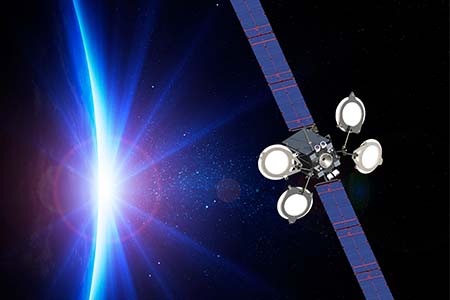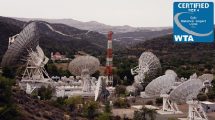
What are you focusing on at CABSAT this year?
MENA is a major market for ABS and has been one of the company’s key targeted regions. We have three prime satellites serving this region namely ABS-2, ABS-2A at 75East and ABS- 3A at 3 West.
ABS-3A satellite is a pillar for high-profile broadcast contribution in MENA, Africa, Europe and the Americas. It services high-growth data, video, mobility and government applications. It has also opened up doors to support European service providers and to challenge established operators that have historically dominated the market. The extensive broad European and pan African C-band coverage in a single beam provides huge prospects for European service providers who wish to leverage their European teleports.
The wide European beam, which extends from North America, across Europe to Moscow, provides optimal coverage for diverse media requirements. The ABS OU service provides reliable and flexible ad-hoc capacity for contribution and distribution of content to any location in the beam footprint. We have made significant progress in this service across these markets with many well-established broadcasters.
In addition, the ABS-3A verticals such as VSAT and IP Trunking are among some of the applications that are being used on the wide MENA Ku-beam covering the whole of the Middle East.
The ABS2 and 2A satellites offer prime capacity over the Middle East and most notably GCC countries. At 75 East, ABS provides access to pan-Asian footprints as well as access to some key European markets (Germany, Italy) and East African coverage. Over such positions, ABS hosts multiple data services and also a video-contribution platform for fixed and mobile users. It is an important service position for various countries including the Russian market place.
We will highlight all of this at CABSAT.
What, in your opinion, are the upcoming trends within the satellite market?
The satellite market has been growing at an annual rate of 4.2% globally, and MENA market is predicted to have the most significant demand in the coming years. This demand will be driven by broadband applications as well as telecoms, M2M, IOT, and maritime.
We see that the satellite capacity demand for in-flight connectivity for entertainment and flight data management will increase in the coming years. Content and internet/broadband traffic will also require a substantial amount of satellite capacity.
 Which vertical do you expect to see maximum innovation in for the satellite market and how are you looking to address this with your solutions?
Which vertical do you expect to see maximum innovation in for the satellite market and how are you looking to address this with your solutions?
Verticals such as broadband, video contribution and video distribution will remain key applications hosted on the ABS satellites. However, the area with the highest degree of innovation seems to be the mobility sector with advanced solutions adaptive to the complex environments services are to be provided.
We have seen different projects by governments in the telecom domain using satellite for military applications. This will continue to exist for several years and will contribute immensely to industry growth.
Broadband is also a major application in the satellite market. Demand is huge as connectivity is vital for the digital society we live in.
How important is the MENA market for you?
The MENA market is very important for ABS. It encompasses countries that are in the process of reconstruction after devastating wars, as well as covering traditional verticals such as oil and gas, maritime and government.
MENA remains a strong satellite region since terrestrial systems, with some few exceptions, are highly expensive and unable to provide comprehensive reach across the whole region. Moreover, satellite may be a complementary system to terrestrial systems, not only because it can be a “fallback solution”, but also a mechanism to enhance security and confidentiality of data transmissions. Satellite is a very private type of network infrastructure, as it does not require cascades of multiple operators, network cross-points, signal regeneration points, etc as per terrestrial systems. Provided that the uplink and downlink facilities are under control, no other “intermediaries” are needed, thus allowing for a highly secure and protected way to transfer data. This is of particular interest for data centres and corporates /governmental entities, highly sensitive to confidentiality. Through its satellites, ABS hosts interesting solutions that complement terrestrial links, providing protection for data transmissions.
The MENA region remains a source of substantial traffic for Satellite News Gathering (SNG), occasional use and broadcasting services for the media industry.
GEO? MEO? LEO? Where lies the future of the industry?
We are excited with the development of the satellite industry and we look forward to seeing the progress of LEO operators. However, its success will be determined by the commercial proposition offered by LEO operators to securing anchor clients and on the capital expenditure for the ground infrastructure and bandwidth costs.
ABS remains GEO focused, considering the traditional services market place has a considerable source of business growth. GEO satellites are still the most cost effective way to provide global communications with a global constellation of three satellites. We feel that enterprise network, media distribution and DTH customers will continue to demand high quality, high availability GEO-based satellite solutions.
Hall 7, F7-30












Add Comment